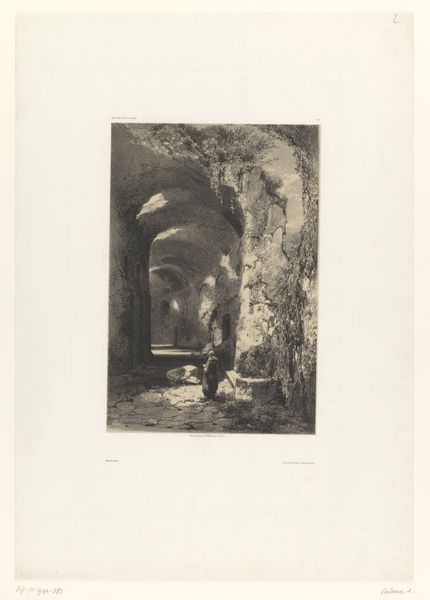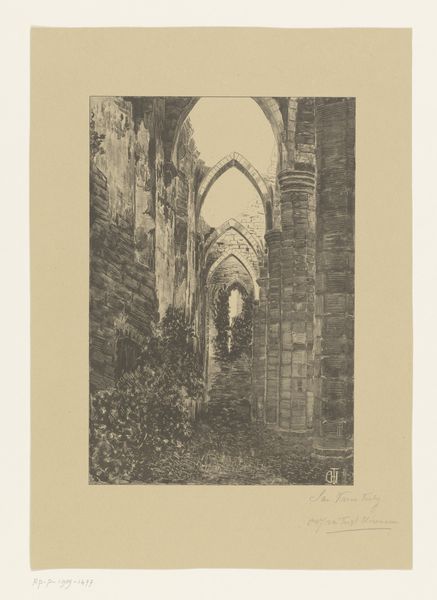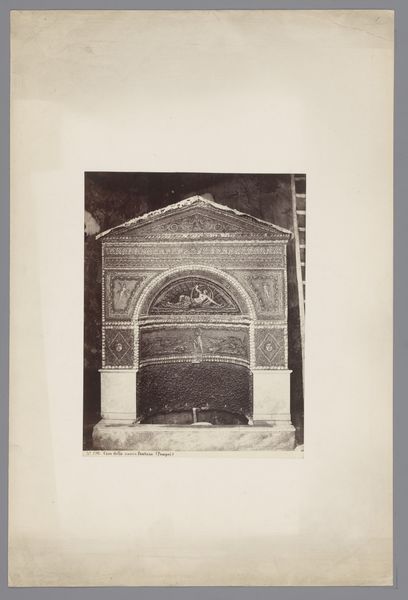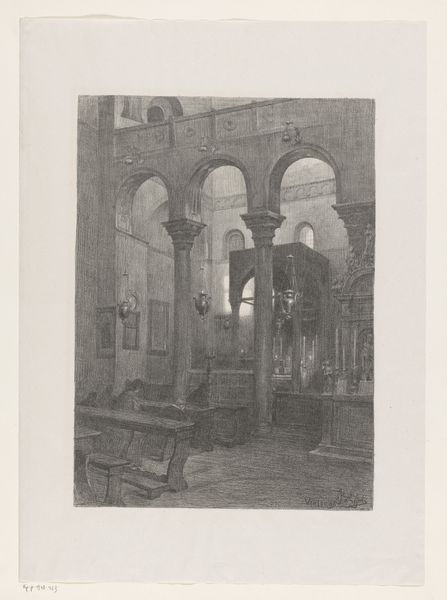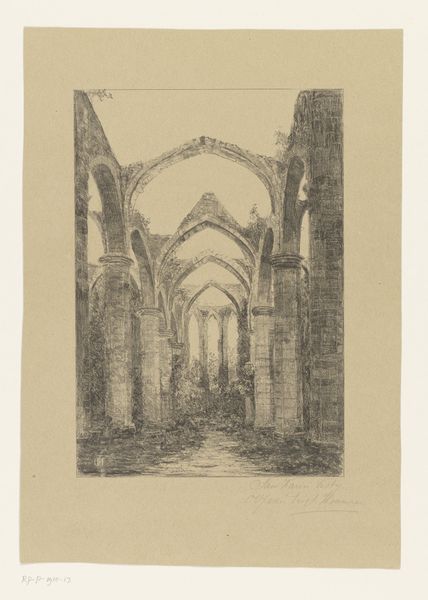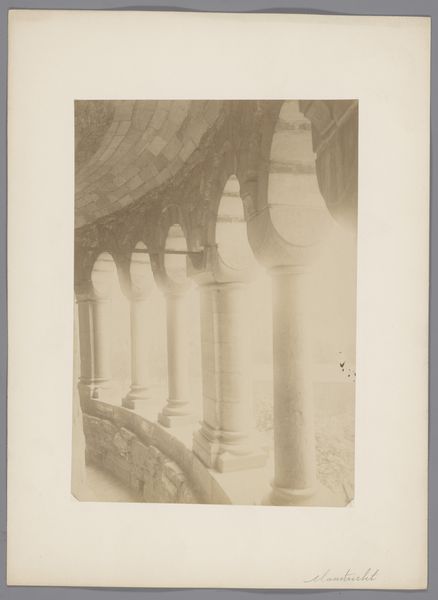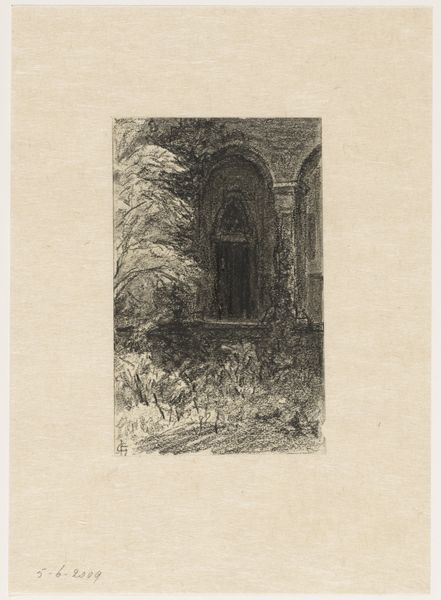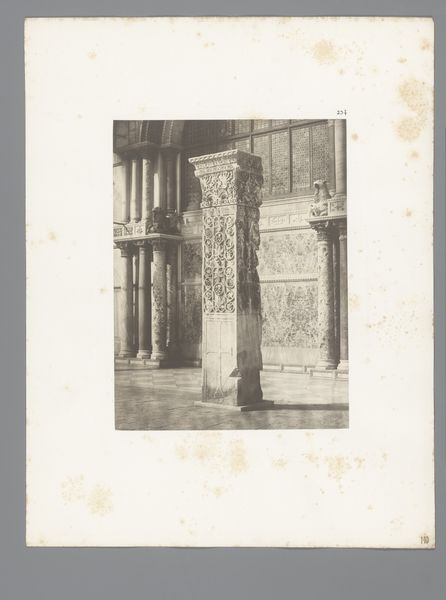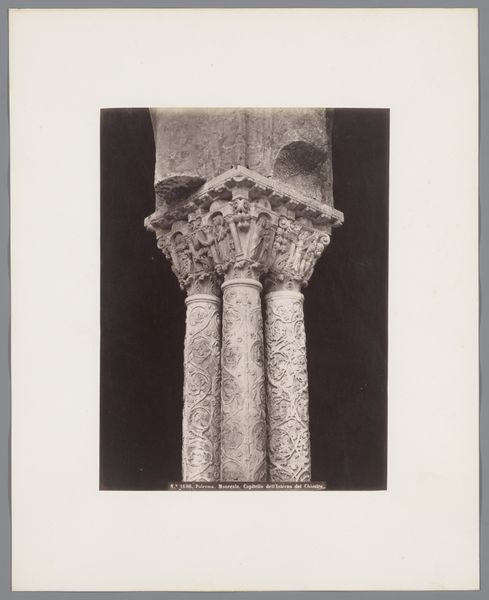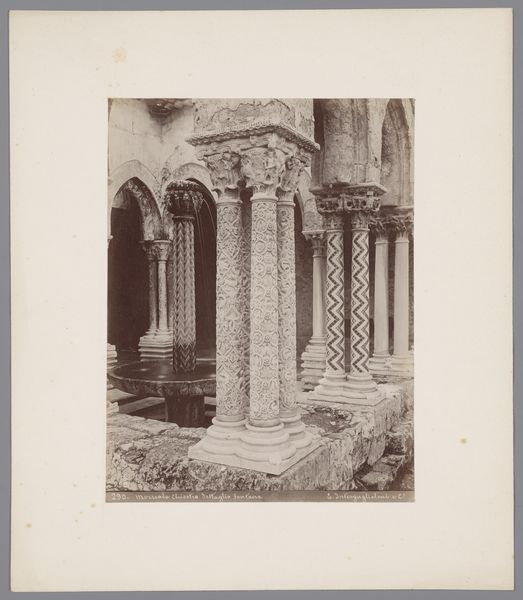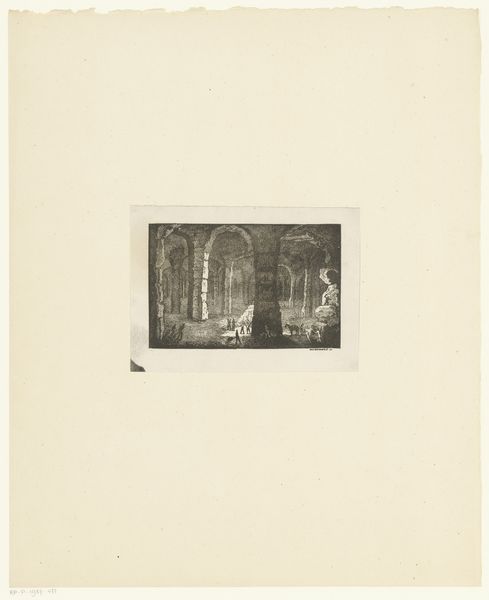
print, photography, architecture
#
photo of handprinted image
# print
#
landscape
#
photography
#
romanesque
#
geometric
#
cityscape
#
islamic-art
#
architecture
Dimensions: height 221 mm, width 170 mm
Copyright: Rijks Museum: Open Domain
Curator: Looking at this rather stunning photographic print, taken by Giovanni Crupi sometime between 1851 and 1900, we see a view into the cloister of the Monreale Cathedral in Italy. Editor: My first thought is of textures; the roughness of the stone plays dramatically against the refined geometric patterning. It feels weighty, yet strangely ethereal. Curator: It’s interesting to consider this image within the broader context of 19th-century photography. Crupi was active during a period when photography was becoming increasingly popular as a means of documenting architectural and historical sites. This photograph contributes to the visualization of cultural heritage and its dissemination. Editor: Absolutely. The photograph's formal structure itself – that arcade framed squarely in the lens – speaks to institutional authority and the cathedral’s prominent place in Sicilian society. One sees power here, solidified over centuries through architectural ingenuity. How were spaces like this truly accessed at the time? Whose prayers echoed off these stones? The photograph allows for speculation and imaginative access to an enclosed domain. Curator: That's a vital question. Monreale Cathedral’s architecture blends Romanesque and Islamic art styles, revealing a complex history of cultural exchange. Built during the Norman rule of Sicily, the cathedral symbolizes the merging of diverse artistic traditions, reflective of an intersectional narrative on its history, of invaders and the invaded, and the evolution of a new religious space that bears both marks of the victors and the marks of a civilization being actively erased. The visual language itself becomes a battleground for identity. Editor: This image reminds me of Said’s theories regarding Orientalism, where Western gazes and artistic modes contributed to the othering of eastern landscapes. Does this image engage in, or potentially subvert that paradigm? The framing by an Italian photographer raises further queries around appropriation and documentation of culture by colonizing entities. Curator: The distribution networks are also something to ponder. Who was seeing this photograph and how did that influence the contemporary conception of Sicilian culture? We need to keep in mind the politics of imagery here. Editor: Reflecting on this work now, I appreciate how a single image can become a portal, inviting conversations around history, faith, and the lingering consequences of cultural hegemony. Curator: Indeed. It prompts us to question the narratives we inherit and explore how art embodies complex intersectional realities.
Comments
No comments
Be the first to comment and join the conversation on the ultimate creative platform.

